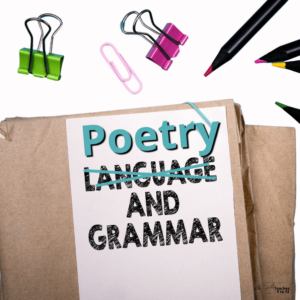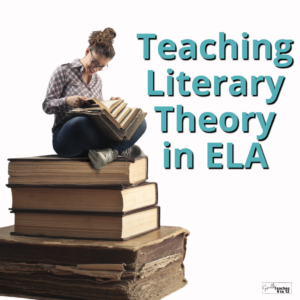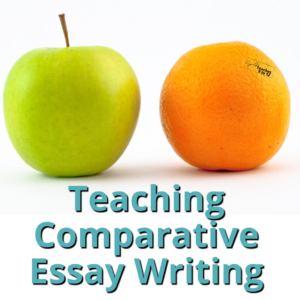Sharing is caring!
I’m always on the lookout to add new poets and poetry to my classroom lessons. With that in mind, I’ve teamed up with a group of other teachers to share seven Canadian poets to study this year in your English class. Adding these poets isn’t limited to just Canadian teachers, so keep reading for some great suggestions!

Poet 1: Shane Koyczan
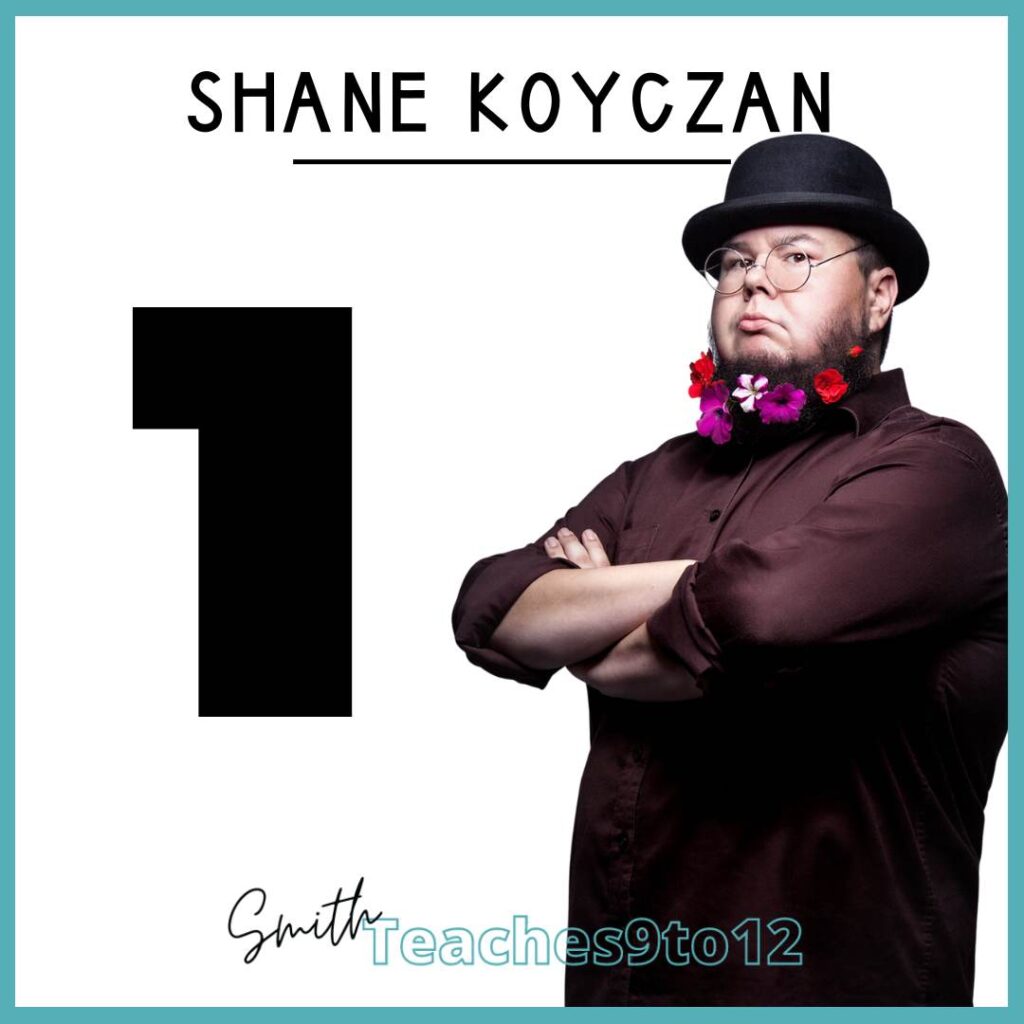
Spoken word is ALWAYS a hit with my students. So I use it as poetry to explore figurative language and big ideas, and as a way to teach presentation skills.
Shane Koyczan is a Canadian spoken word artist from the Northwest Territories who grew up in BC. His work focuses on a variety of personal/social issues such as his bullying, body image, confidence, and more. You can check out his performances on his YouTube page.
Two poems that I have used in class with great success are To This Day as a short animated film, A Tomorrow in response to the pandemic, and We Are More as a way to explore “Canadian” identity. Be mindful that some of his work is about big topics that may be difficult for students. Preview his work before sharing it with your students since you know them best! And because he is so prolific in his writing he features a monthly poem on his website with some insight into the content and process of writing the poem.
Check out more spoken word with this mini-unit featuring a variety of artists or this free poetry e-book featuring spoken word for each month of the year including a performance evaluation activity.
Poet 2: Louise Bernice Halfe / Sky Dancer

Louise Bernice Halfe, who also goes by the Cree name Sky Dancer, was raised on the Saddle Lake Indian Reserve and attended Blue Quills Residential School before going on to become a social worker and poet. Halfe’s poetry reflects her experiences in residential school as well as her perspective as a social worker, weaving Cree language and teachings into her writing as much a political statement against silence and erasure as a poetic expression. In 2021 Halfe was appointed Canada’s ninth Poet Laureate, being the first Indigenous person to hold this position.
Katie from Mochas and Markbooks was first introduced to Halfe’s poetry when a student teacher included the poem “Dear Pope” in a lesson. This poem is written like a letter addressing the pope after he issued a generic apology in 2002 for “violating the rights of ethnic groups and peoples, and showing contempt for their cultures and religious traditions …” The poem invites discussion around the poet’s tone and who the speaker might be, as the poem is written in a distinct Indigenous dialect, different from Halfe’s own voice. Playing a video of Halfe reciting the poem will help students to analyze the message further.
Poet 3: Michael Ondaatje

If you remember the film The English Patient from the late nineties, you might recognize the name Michael Ondaatje (pronounced “on-dart-she”) – the renowned Canadian writer and author of the novel by the same name. Ondaatje is an award-winning novelist and a Companion of the Order of Canada; believe it or not, Ondaatje’s celebrated career began with his poetry.
Ondaatje’s poetry is known for its musical quality; his use of rhythm and rhyme create a beautiful auditory effect in several of his poems. His use of vivid imagery and sensory language help his readers travel with him to places like Sri Lanka, where Ondaatje was born, and where he wrote his 1999 collection of poems, Handwriting.
Daina from Mondays Made Easy loves exploring Ondaatje’s poetry in secondary classrooms. High school students will enjoy Ondaatje’s coming-of-age poem, “To a Sad Daughter.” This poem is a letter written from father to daughter about stepping foot in a world where life is not always easy, and people are not always who they seem to be. With Canadian-esque symbols (like hockey masks and forsythia) and references to the culture of adolescence, your students will find a lot to talk about with this heartfelt poem.
Poet 4: rupi kaur

Rupi Kaur puts into words what so many people feel. She touches on love, trauma, femininity, migration, and more in her work. Her poems connect particularly strongly to young women.
Kaur has published several books, which have collectively sold more than 11 million copies and have been translated into more than 43 languages. She rose to fame as a poet on Instagram, where she has amassed 4.5 million followers.
Kaur’s poems are generally short and written in lowercase – a nod to her mother tongue (Punjabi) when it is written in Gurmukhi script (which has no lower or uppercase letters), and a reflection of the simplicity she loves. The style also represents the equality she would like to see more of in the world.
A wide selection of her work can be found online through her Instagram or a Google search. Here are some poems to start with:
Find great middle school poetry lessons created by Kristy here.
Poet 5: Robert Service
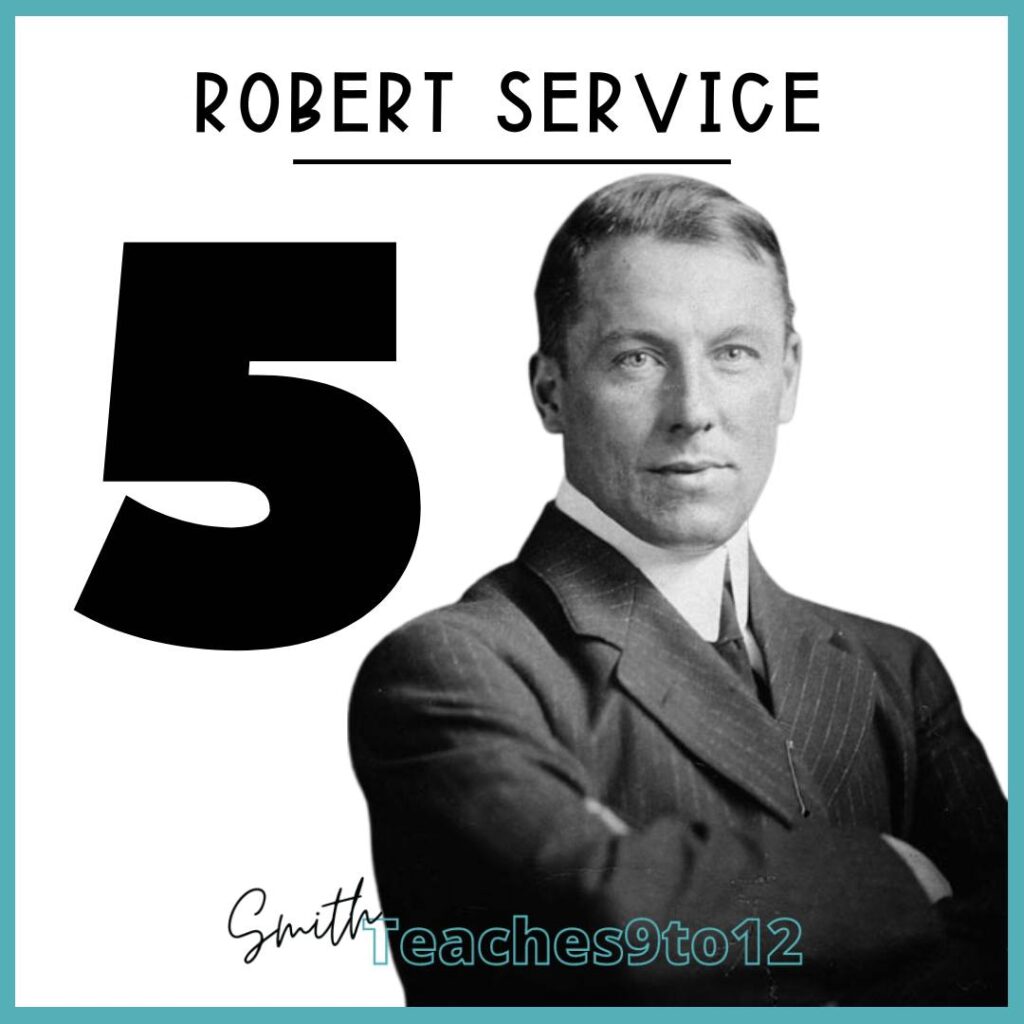
Marissa from Creative Classroom Core is a big fan of using the poetry of Robert W. Service with her learners.
When traveling to the Yukon for work, Service was inspired by stories of the Klondike Gold Rush. This inspired him to write two of his most popular poems, “The Cremation of Sam McGee” and “The Shooting of Dan McGrew”. Both poems, along with other tales of the Yukon, were published in “The Songs of Sourdough” in 1907. They became wildly popular upon publishing. Today, these poems continue to appeal to poetry fans. Their lyrical quality and engaging story lines have made them hits in Marissa’s middle school classroom.
Illustrated versions of Service’s poetry can be found on Amazon, featuring the work of Canadian artist Ted Harrison. The beautiful images make great writing prompts and jumping off points for classroom discussion. If you are looking for some additional background on the Klondike Gold Rush, be sure to check out these resources here.
Poet 6: Zetta Elliot
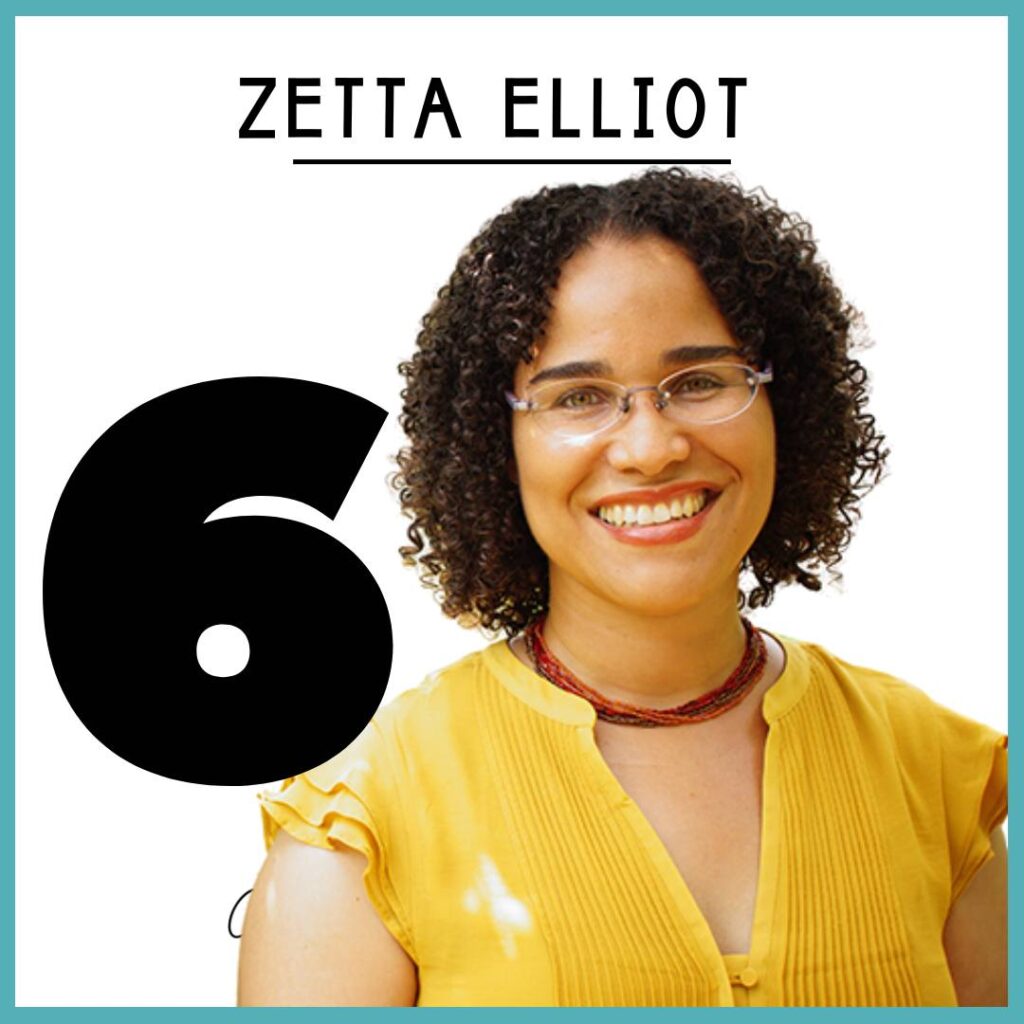
Zetta Elliot was born and raised in Toronto with her immigrant parents. Her childhood is the inspiration for many of her books and poems which reflect complex issues like race and identity.
Her most powerful poetry book is Say Her Name (2020). It tells the stories of young, Black girls who have been victims of police violence. Another favourite is Suzie Bitner Was Afraid of the Drain (2006) which looks at childhood fears and anxieties (something so many students relate to today).
While National Poetry Month is held in Canada during April, poetry, especially by Canadian poets, is an easy type of text to sprinkle throughout the school year. It is often short and less intimidating to students than novels. Learn some of the ways to include poetry in your classroom all year long in this post written by Brain Ninjas. It includes poetry resources that don’t require prep or finding poems.
Poet 7: P.K. Page
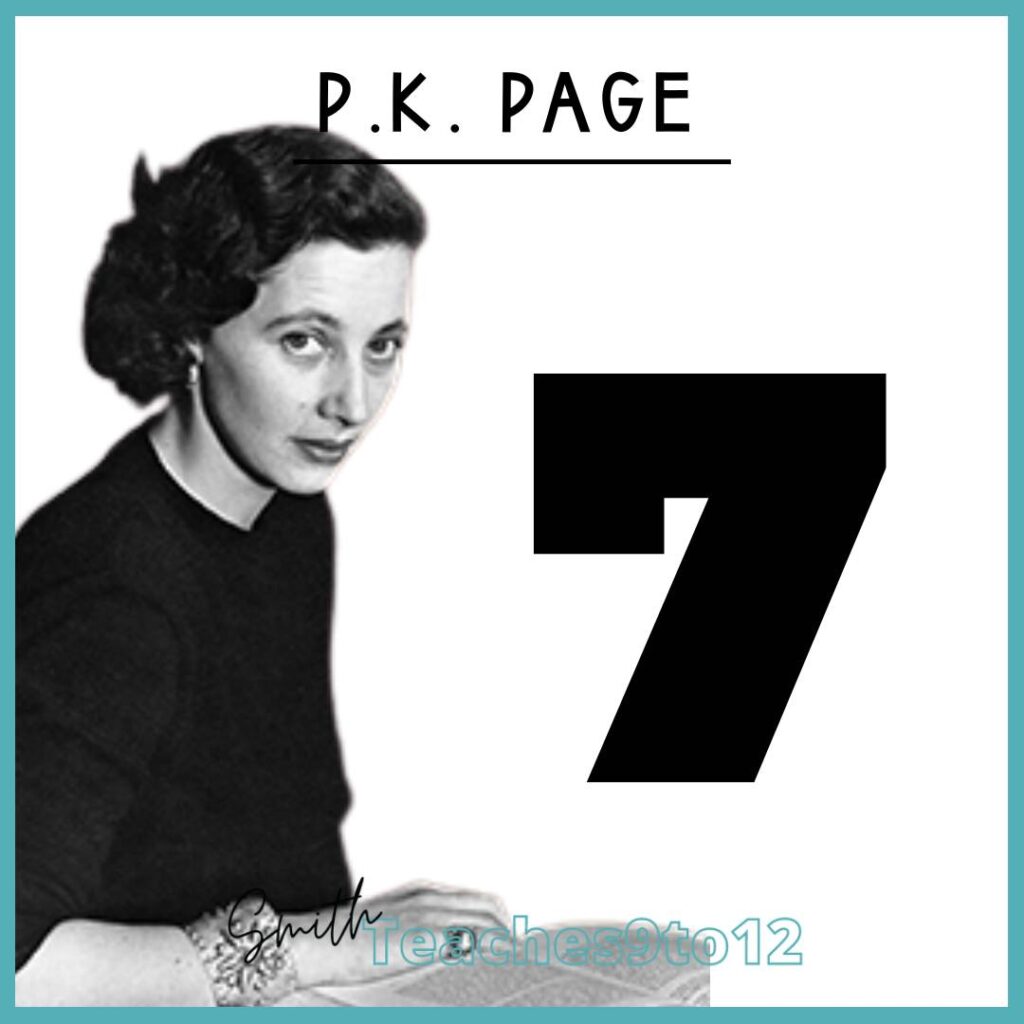
I first encountered Page’s work in my undergrad when attending a symposium about her work and studying her poetry in class. And the more I found out about her the more fascinated I was.
Poet PK Page wore a lot of hats! She was a poet, a painter known as PK Irwin, and a fiction writer known as Judith Cape. The different identities for her various artistic endeavors alone are worth an examination! But for me, it’s her poetry where she best grabs my heart; she is one of my favourite Canadian poets.
Page’s poetry highlighted two specific areas of focus for her–visual imagery and environmentalism.
First is visual imagery in her work. Check out poems like My Chosen Landscape Stories of Snow, and The Metal and the Flower, one of her most notable works. Consider using these poems in a study of ekphrastic poetry and then get your students to write their own ekphrastic poems with this activity.
The other aspect of her work is her focus on the environment and crusading for action on climate change. In 2000, her poem Planet Earth was part of the United Nations’ International Year of the Dialogue. The poem was read simultaneously on Mt. Everest, Antarctica, and in New York at the UN Headquarters.
I like to use this poem as a complement to more spoken word poetry, also focused on the environment. Check out this resource with a full lesson including poetry suggestions, extensive teachers’ notes and answer key, plus a guide for students to write their own environmentally-focused poetry.
Read more of Page’s poetry on the Griffin Poetry Prize site, including a personal favorite From Alphabetical.
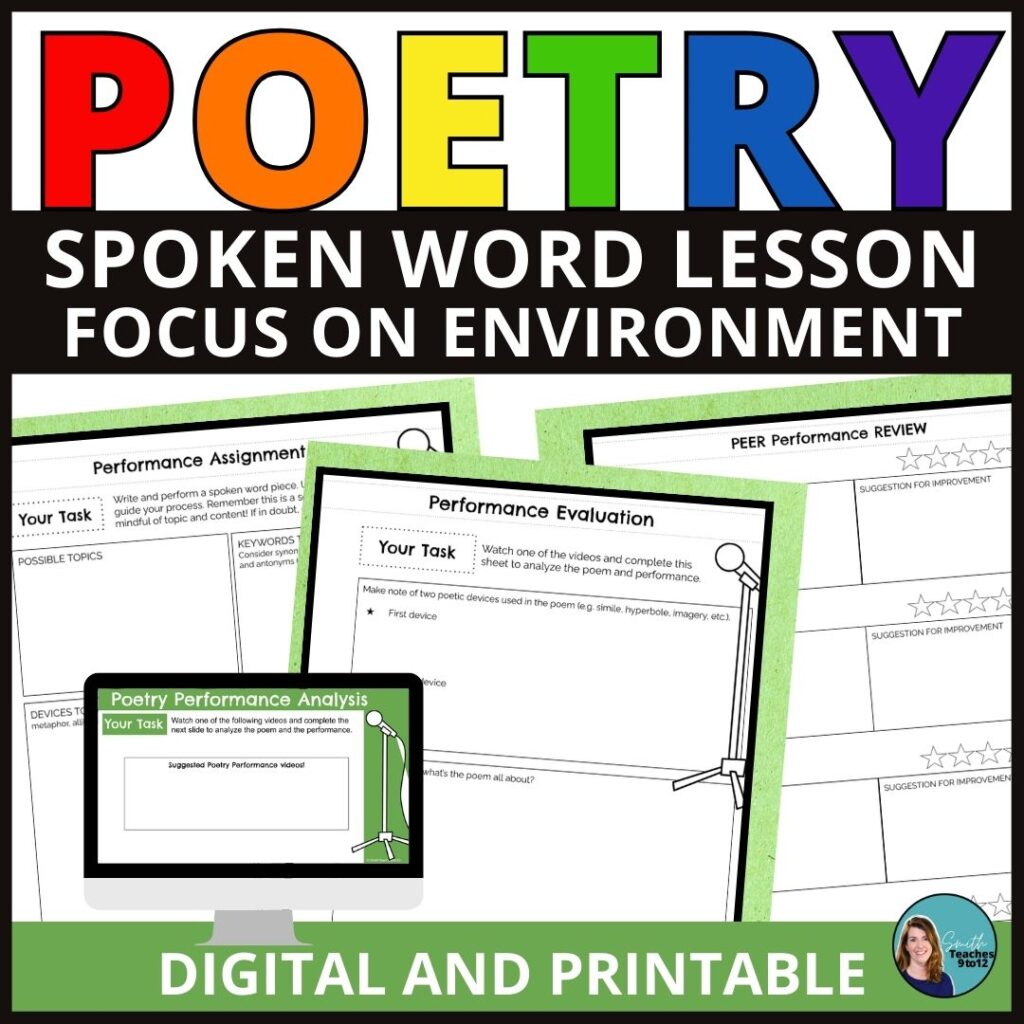
To add more environmentally-themed poetry check out this spoken word poetry lesson that includes a variety of poems in performance. This is perfect for Earth Day in April or anytime of year you want to include a focus on the environment.
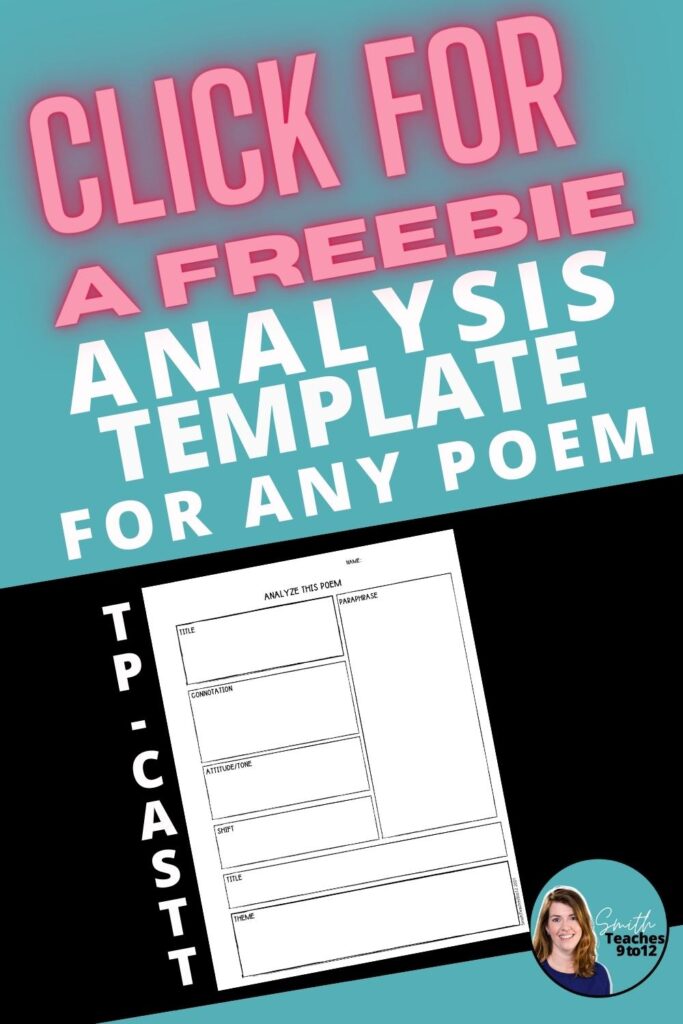
We’re hopeful that these suggestions for Canadian poets are welcome additions to your classroom lessons. Whether it’s in April for National Poetry Month or anytime you’re teaching poetry this year and the years to come, these suggestions are sure to engage your students and bring a little Can-con (aka Canadian content) into your classrooms!
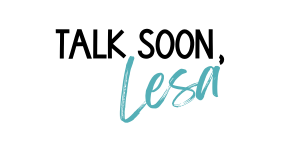
Related articles:


